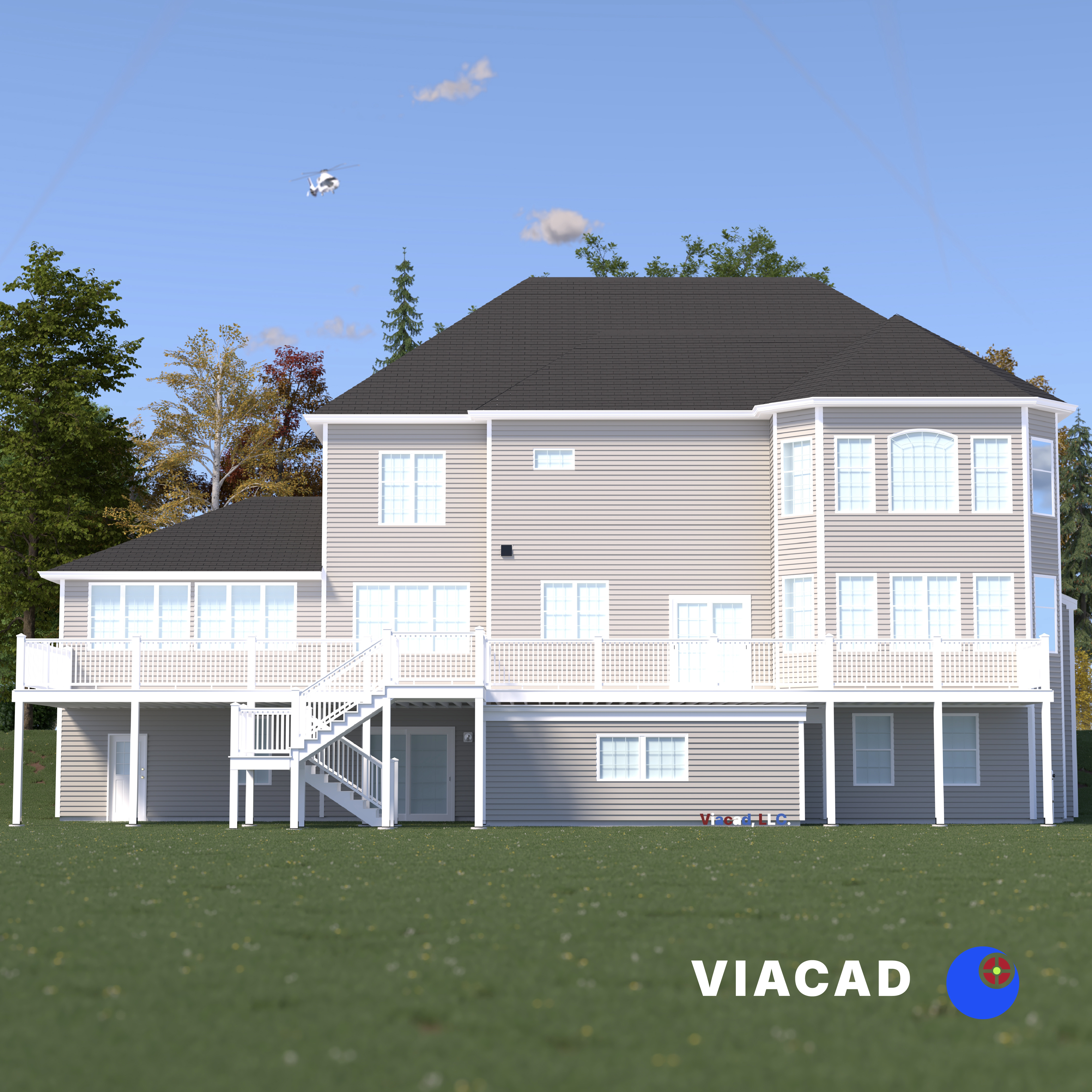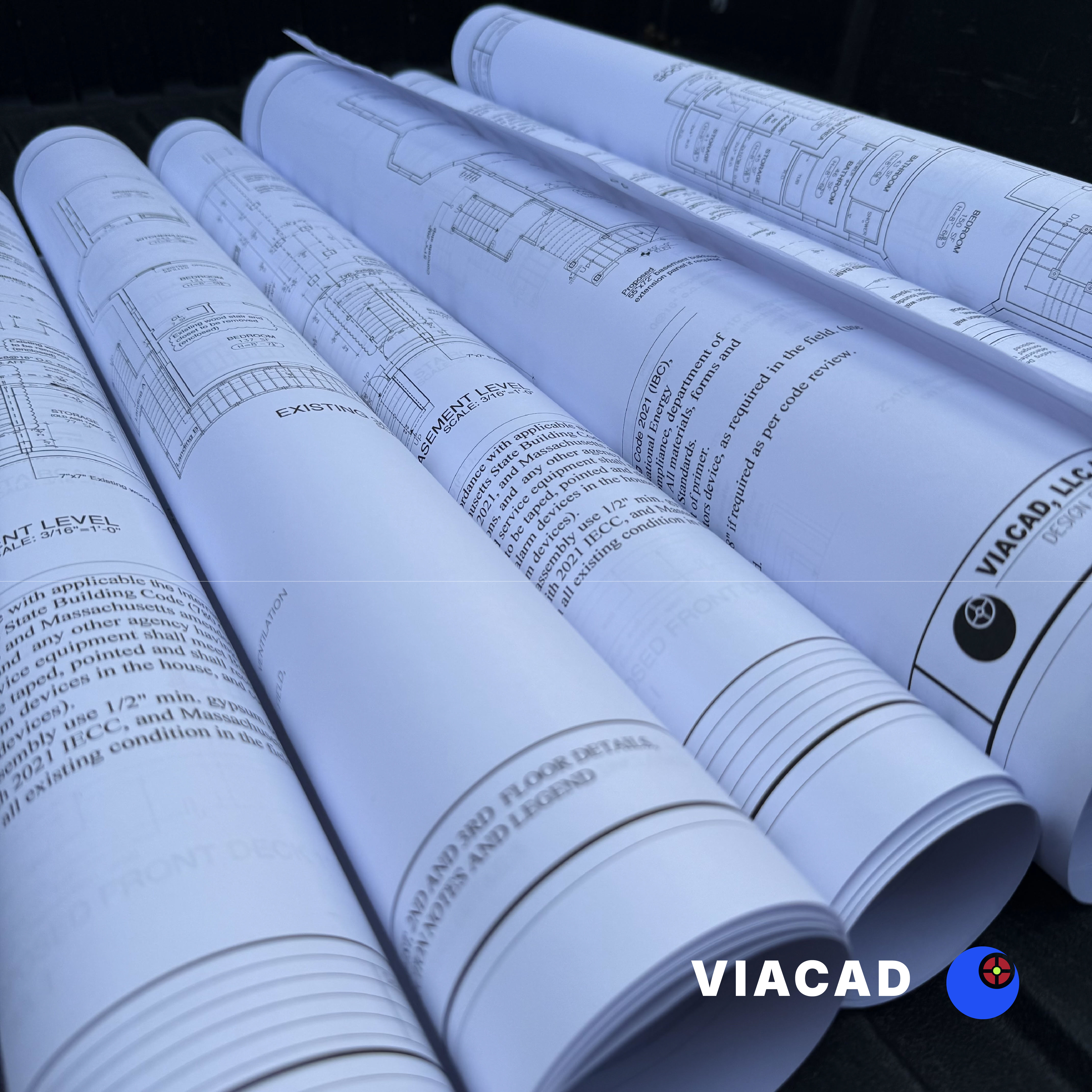
NOTE: VIACAD, LLC specializes in developing and producing detailed building plans (construction blueprints) for both residential and commercial projects across Massachusetts with more than 18 years of experience in design & construction producing professional permit-ready drawings for homeowners, builders, developers, and businesses.
Building a sturdy and durable deck requires a solid foundation, and understanding how to pour a concrete deck footing in Massachusetts is crucial for any homeowner or builder undertaking this project. Deck footings serve as the essential support system for your deck, ensuring stability and longevity, especially in regions like Massachusetts where freeze thaw cycles and frost heave can pose challenges. This guide will walk you through the entire process, from planning and digging to pouring and finishing your concrete footings, all while emphasizing compliance with local building codes and best practices for construction.
NOTE: Information provided here is for educational purposes only.
Deck footings are the concrete bases that anchor the wooden posts supporting your deck. These footings must be solid and deep enough to resist movement caused by frost heave, a common issue in Massachusetts due to the region’s freezing temperatures and snow.The frost line, which is the depth to which the ground freezes, dictates how deep you need to dig your footings to prevent sinking or shifting over time.
When building deck footings, it’s important to create a foundation that can bear the weight of the deck and any additional load, such as furniture or people. A solid concrete footing ensures that the structure remains sturdy through various weather conditions, including the freeze thaw cycles that can affect soil stability. This foundation is not only critical for decks but also for other permanent structures attached to your house, such as pergolas or gazebos.
Before you begin digging, it’s essential to check local building codes to understand the requirements for footings in your area. Massachusetts has specific regulations regarding the depth, diameter, and spacing of deck footings to ensure safety and durability. These codes often specify that footings must extend below the frost line to prevent frost heave.
Start by marking the locations of your deck footings using spray paint or stakes. Use a plumb bob to ensure your markings are vertically aligned with your planned deck posts and ledger board. Accurate marking and measuring are critical to ensure proper spacing and support for your new deck.
Gather all necessary tools and materials, including a shovel or auger for digging, forms to shape the concrete, rebar for reinforcement, and quality concrete mix. Having everything ready before you begin will streamline the construction process and improve the quality of your footings.

The next step is digging the holes where your concrete footings will be poured. Using a shovel or an auger, dig each hole deep enough to reach below the frost line, which in Massachusetts can be around 42 inches or more, depending on the locality. The hole’s diameter should be wide enough to accommodate the concrete footing and any reinforcement bars (rebar) you plan to use.
Ensure the bottom of each hole is level and free of loose soil to provide a stable base for the concrete. If the soil is unstable, you may need to compact it or add gravel to improve drainage and prevent shifting. Properly prepared holes will help avoid sinking or tilting of the deck posts over time.
To pour concrete footings that maintain their shape and strength, you need to build sturdy forms around each hole. These forms, typically made from wood, act as molds that hold the wet concrete in place until it cures. Secure the forms firmly in the ground to prevent movement during pouring.
Inside the forms, place rebar vertically and horizontally to reinforce the concrete footing. Reinforcement increases the footing’s durability and helps resist cracking or breaking under stress. Make sure the rebar extends into the ground and is positioned in the middle of the footing to provide maximum support for the deck posts.
Once your forms and rebar are set, it’s time to pour concrete. Begin by mixing the concrete according to the manufacturer’s instructions, ensuring the consistency is suitable for pouring. Pour the wet concrete slowly into the forms, starting at one side and continuing to fill the hole evenly.
Use a shovel or a rod to poke the concrete and release any trapped air bubbles, which can weaken the footing. Continue filling the form until the concrete reaches just above ground level. Then, use a trowel to lay and smooth the surface, creating a clean finish that will support your deck posts effectively.
After pouring, it’s important to let the concrete cure properly. This process usually takes several days, during which the concrete gains strength and hardens. Avoid disturbing the footings during this time to prevent weakening the foundation.
If you’re building in spring or early summer, curing is generally faster. However, in colder months, you may need to take extra steps to protect the concrete from freezing temperatures, such as covering the footings with insulated blankets. Proper curing ensures your concrete footings will withstand Massachusetts’ freeze thaw cycles and provide a long-lasting foundation for your deck.
Once the concrete footings have fully cured, remove the forms carefully. You can then attach the wood posts directly to the footings using post anchors or brackets. Ensure the posts are plumb and securely fastened, as these will support the entire deck structure.
Attach the ledger board to your house if your deck design requires it, making sure it is level and properly anchored to the building’s foundation. Double-check all measurements and alignments before proceeding with the rest of the deck construction.
Knowing how to pour a concrete deck footing in Massachusetts is fundamental to building a safe and durable deck. By following the proper steps, including checking local building codes, digging below the frost line, reinforcing the footings, and allowing adequate curing time, you can create a solid concrete footing that will support your deck through years of use and harsh weather conditions.
Whether you are a homeowner, builder, or contractor, understanding this process will help you build decks and other permanent structures that stand strong in Massachusetts’ challenging climate.

Contact us if you'd like to commission or collaborate with VIACAD, LLC.
Currently accepting projects in Massachusetts.